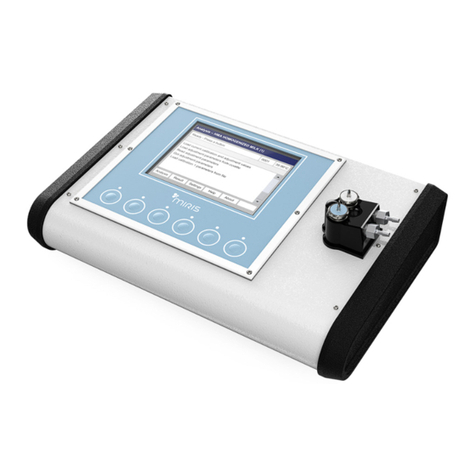Miris SONICATOR™User Manual
4
IMPORTANT USER INFORMATION
INTENDED USE OF THE MIRIS SONICATOR™
Miris SONICATOR™reduces the particle size distribution in milk, making the milk sample more homogenous. This
device is intended for use in laboratories by laboratory personnel.
WARRANTIES AND DUTIES
By operating this Miris SONICATOR™, the USER and MIRIS agree to the following responsibilities, which constitute
contractual warranties and conditions between MIRIS and USER for the maximum benefit and usefulness of the
Miris SONICATOR™.
MIRIS AB WARRANTS THAT IT:
•Knows of no defects in the construction of the Miris SONICATOR™ or its materials used
•Will replace or repair the Miris SONICATOR™according to the guarantee in the product warranty
USER WARRANTS THAT:
•The Miris SONICATOR™will be used according to the instructions given in the user manual
•The Miris SONICATOR™will not be altered without written approval of MIRIS AB
•MIRIS will be notified immediately if any injury occurs in any association with the Miris SONICATOR™,
and will be allowed prompt and thorough examination of the Miris SONICATOR™in question
•MIRIS will not be held responsible in cases of injury arising from use of the Miris SONICATOR™:
a. When the Miris SONICATOR™is not used according to the instructions in this manual
b. When MIRIS is not notified within 5 days of said injury
SAFETY INFORMATION
To avoid damaging the Miris SONICATOR™, please read this information before installing or using the instrument.
Always keep the protective cover of the Input voltage selector in place
Never open the unit by removing the screws of the main body
Keep the probe securely tightened in place
Never leave milk residues on the probe
Plastic sample containers are recommended, glassware may be pierced
Only use Miris SONICATOR™for processing milk, no other liquids
Never allow the probe to vibrate in air
Never allow the vibrating probe tip to contact anything but the milk sample
Always use input voltage 110/240 V @ 50/60 Hz, according to the settings of the voltage selector
MIRIS AB can only guarantee the function and performance of the Miris SONICATOR™when it is properly used
and maintained as described in this manual.




























